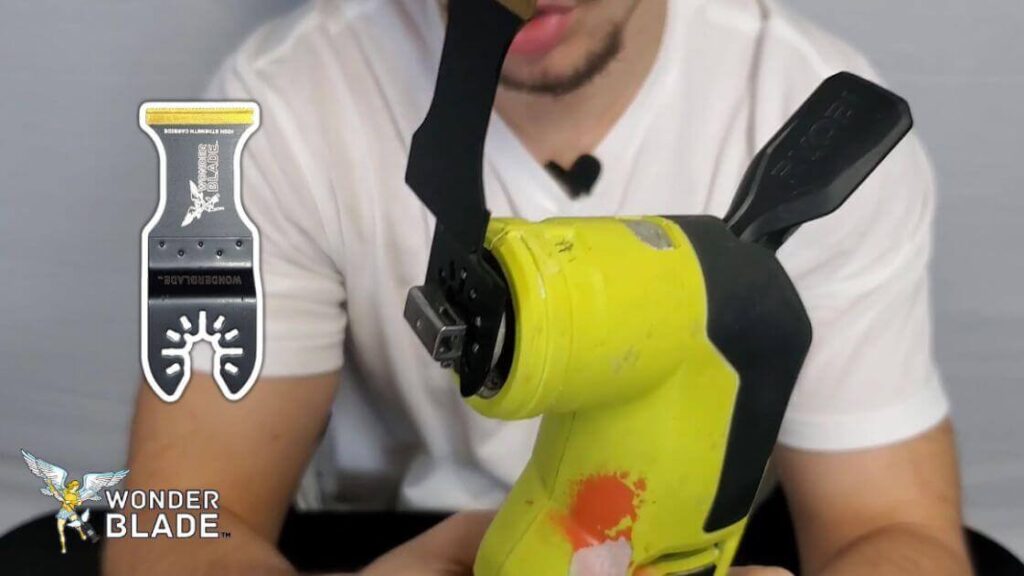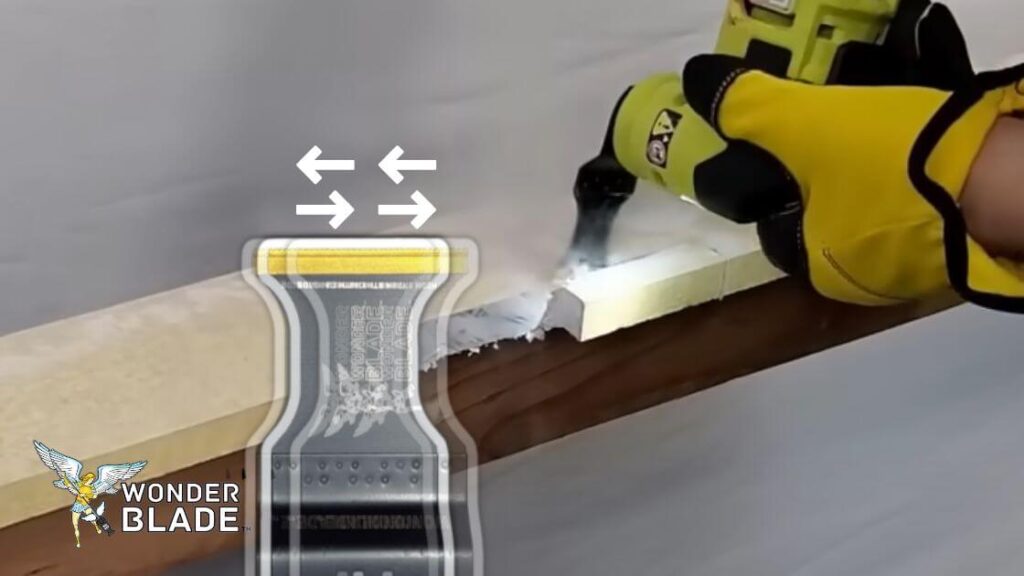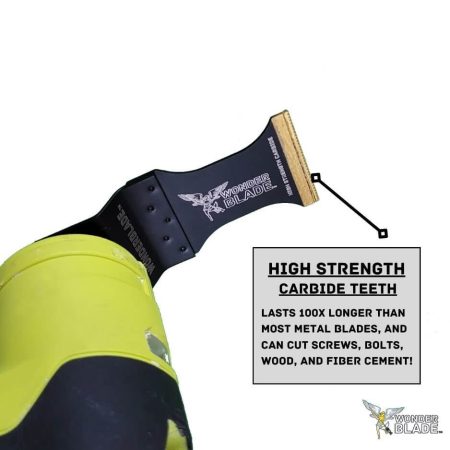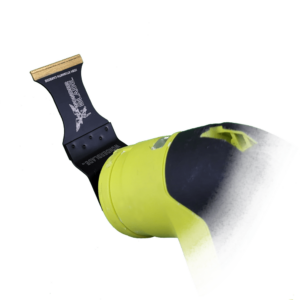
Looking to add a versatile tool to your tool box that can handle a wide range of tasks?
Look no further than the oscillating multitool! As featured in Family Handyman, with the right accessories, an oscillating multi tool can handle everything from sanding and smoothing surfaces to cutting through materials and even grout removal.
One of the most significant advantages of an oscillating tool is its oscillating saw motion, which generates less heat and vibration than other power tools, making it ideal for delicate and precise work. With cutting blades, sanding pads, grinding blades, plunge-cut blades, and scraping blades, an oscillating tool can be used for specific tasks to enhance its capabilities and make it even more versatile.
Whether you’re a DIY enthusiast or a professional contractor, knowing how to use an oscillating tool properly can help make your projects easier, faster, and more efficient. However, it’s essential to take essential safety precautions when using an oscillating tool, such as wearing appropriate personal protective equipment and keeping your fingers away from the tool cut zone.
By selecting the right accessories for your project and properly maintaining your oscillating tool, you can ensure it runs at peak performance for years to come. So, add an oscillating multi tool to your collection, and you’ll be amazed at the range of tasks it can handle.
Before diving into how an oscillating tool works, let’s define it. An oscillating tool is powerful and operates by rapidly oscillating or vibrating a blade or accessory. The oscillating motion allows for precision cuts and detailed work that would be difficult to achieve with other power tools.
The oscillating tool comprises several parts, including the motor, gear assembly, and accessory attachment mechanism. When the engine is turned on, it powers the gear assembly, which drives the accessory attachment mechanism. This mechanism allows you to attach and detach various accessories depending on the task.
An oscillating tool can be a valuable addition to any tool box, with its versatility and range of accessories allowing it to handle a wide range of tasks. By choosing the right accessories, prioritizing safety, and properly maintaining the tool, you can ensure it’s running at peak performance and can help you complete projects easier, faster, and more efficiently.
Whether you’re a DIY enthusiast or a professional contractor, an oscillating tool is a must-have tool that can make your projects a breeze. So, invest in an oscillating tool and start exploring the possibilities!

The oscillating motion of the tool is achieved through the use of an eccentric offset drive. This drive converts the motor’s rotational movement into a back-and-forth oscillating motion. The offset drive comprises an eccentric shaft, a connecting rod, and a blade holder.
When the motor is turned on, the eccentric shaft rotates, causing the connecting rod to move back and forth. This back and forth motion is then transferred to the blade holder, which moves back and forth, creating an oscillating signal. The frequency and amplitude of the oscillation can be adjusted depending on the task and the accessory being used.
If you’re looking for a versatile tool that can perform a range of tasks, an oscillating tool is an excellent choice. This tool can be used with different accessories, including cutting blades, sanding pads, grinding blades, plunge-cut blades, and scraping blades. Each accessory serves a specific purpose, making it easier to work on various projects with ease.
Cutting blades are one of the most popular accessories for oscillating tools. They come in different shapes and sizes, making them suitable for cutting through different materials like wood, metal, and plastic. The blade’s tooth count is also important since it determines how fast it can cut and how clean the cut will be. Some blades have finer teeth for smoother cuts, while others have coarser teeth for faster cuts.

*Save yourself time, money, and hassle with the best oscillating tool blade in the industry that lasts many cuts through wood, screws, fiber cement, sheetrock, plastic, and more.*
Sanding pads are another popular accessory used with oscillating tools. They are used for smoothing and preparing surfaces for painting and come in different grits and sizes. The grit determines how coarse or fine the sanding pad is, with lower numbers being coarser and higher numbers being finer. Choosing the right grit will depend on the material you are working on and the level of smoothness you require.
Scrape blades are another useful accessory for oscillating tools. They are ideal for removing paint, adhesives, and other materials from surfaces. They come in different shapes and sizes, with some having a serrated edge for increased scraping power.
When choosing an oscillating tool, there are several factors to consider, including motor power, oscillation speed, and compatibility with accessories. The best oscillating tool will have enough motor power to handle different materials and accessories, a variable speed setting for more precise control, and be compatible with a range of accessories.
The oscillating tools are versatile and can be used with various accessories to enhance their capabilities. Cutting blades, sanding pads, grinding blades, plunge-cut blades, and scraping blades are just some of the accessories you can use with an oscillating tool. When choosing an oscillating tool, it’s important to consider factors like motor power, oscillation speed, and accessory compatibility to ensure you get the best tool for your needs.
Oscillating tools are not only versatile but also powerful tools that can be used for different tasks such as sanding and cutting through materials like wood and metal. One of the most popular accessories used with oscillating tools is the cutting tool blade. There are many types of cutting blades, but the bimetal blades are the most popular choice because they can cut through various materials with ease.
The oscillating power of these tools makes them ideal for tasks such as cutting wood, shaping and smoothing surfaces. The multitool also allows you to use a range of accessories, such as triangular sanding pads, grindedged blades, and removal blades. With the right accessory, you can accomplish a variety of tasks with one tool, saving you time and money.
Bimetal blades are common for cutting through materials like wood because they are durable and can withstand high speeds without getting damaged. They are also sharp and can make precise cuts, making them an ideal choice for intricate work. These blades are designed with two different types of metal, making them suitable for cutting through different materials.

*However, the major issue is that many blades that you’ll find in your local hardware store tend not to last, here at WonderBlade we have an all around General Purpose Oscillating Tool Blade that lasts time and time again against hundreds of cuts through wood, fiber cement, sheetrock, plastic and more*
One of the significant advantages of using oscillating tools is the precision that they offer. With the right tool blade, you can make precise cuts in the middle of a surface without starting from an edge. This precision is especially helpful when working with delicate materials or when accuracy is crucial.
In addition to precision, the versatility of oscillating tools makes them a valuable asset in any toolbox. There are many blades and accessories available, which means you can accomplish a wide range of tasks with a single tool. For example, the removal blades are perfect for removing old paint or adhesive from surfaces, while grindedged blades can be used for shaping and smoothing surfaces.
Oscillating tools are also relatively safe to use, with a low risk of accidents or kickbacks. The blade or accessory moves back and forth in a controlled manner, reducing the risk of injury compared to other power tools like saws or drills.
The oscillating tools are versatile, efficient, and relatively easy to maintain. With their range of blades and accessories, you can accomplish various tasks such as cutting through wood and metal, shaping surfaces, and removing old paint or adhesive.
Whether you’re a DIY enthusiast or a professional contractor, an oscillating tool is an ideal choice for getting the job done quickly and efficiently. So, get your hands on the best oscillating tool with the right motor power and start exploring its many benefits!
When it comes to choosing the right oscillating tool, it’s important to consider the type of blades that come with the agency. Different blades are designed for different tasks, and having the right blade can make all the difference in the success of your project.
For example, if you plan to cut through wood, you’ll want to look for a bimetal blade, which is specifically designed for cutting through wood.
While oscillating tools are incredibly versatile, there may be times when a different tool is better suited to the task at hand. For example, if you need to make long straight cuts, a circular saw may be a better option than an oscillating tool. However, if you need to make precise cuts or work in tight spaces, an oscillating tool may be the ideal choice.
Ultimately, the key to getting the most out of your oscillating tool is to experiment with different blades and accessories and find the combination that works best for your needs. Whether you’re using it for sanding and smoothing surfaces or cutting through materials like wood and metal, an oscillating tool can be an incredibly valuable addition to any toolbox.
While oscillating tools are handy, they can also be dangerous if not used properly. Here are a few tips for using your oscillating tool safely:
By following these simple tips, you can ensure you’re using your oscillating tool safely and effectively.
As with any tool, oscillating tools continue evolving and improving. Here are a few recent innovations in oscillating tool technology:
Oscillating tools are incredibly versatile and can be used for various tasks, from sanding and smoothing surfaces to cutting through materials and shaping characters. By choosing the right tool and following essential safety tips, you can use an oscillating tool to tackle almost any project you can imagine.
As technology continues to evolve, oscillating tools are becoming even more efficient and convenient, with innovations like brushless motors, cordless options, and tool-free accessory changes.
Whether you’re a DIY enthusiast or a professional contractor, an oscillating tool is an invaluable addition to your toolbox.
Submit your questions, thoughts, or concerns to help us make better content just for you: